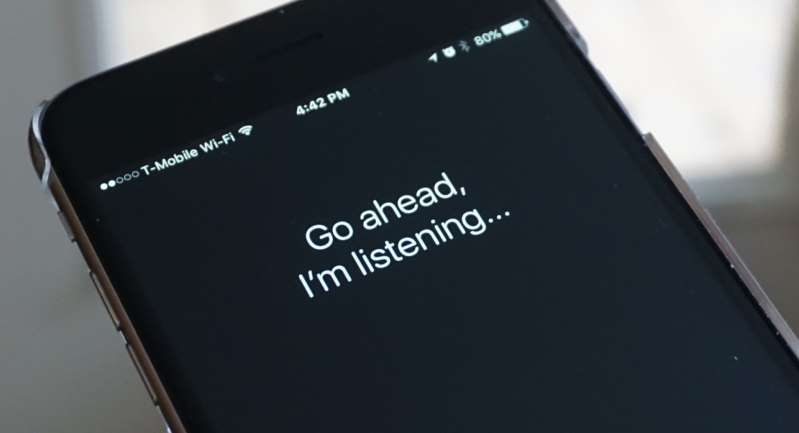If you’re in the market for a wearable, you’re probably pretty confused right about now. If your pedometer can receive texts, is it a smartwatch? If your smartwatch can monitor your heart rate, does that make it a fitness gadget? Let’s sort it out and figure out which wearable, if any, is right for you.
• Priorities, priorities
It all comes down to what you want most out of your wearable. If you already do a good job of finding time to work in a few calorie-burning activities on a regular basis and want something that can relay your e-mails, social notifications and, of course, tell you the time, a smartwatch is going to be the best fit for you.
But if you don’t have a high-stress office job, don’t get much e-mail and just want the doodad on your wrist to tell you how good of a job you’re doing being active, you won’t miss the little add-ons that a smartwatch offers. If you’re already tracking your calorie intake and just want to make sure you’re pushing just as many out by the end of the day, a fitness band will get the job done — and keep you on your feet and burning those calories.
There are plenty of bands that do either one or the other, and do it very well: The Jawbone Up24 ($99), Fitbit Flex ($99) and Misfit Flash ($49) all put your fitness front and center. All three measure every calorie you shed while monitoring your performance on a variety of activities and sports, and after the sun goes down they tell you just how well you slept. Your only real decision here is what style and color best fits your workout gear.
On the smartwatch side of things, the Moto 360 ($249) has been an extremely popular option this year, with a stylish round design and Android Wear, which forwards just about every notification you can imagine right to your wrist. The Pebble ($99) is also still an easy recommendation, with more apps and functionality than ever before, so your Tweets, Facebook updates, e-mails and a ton of other info can pop up on your arm instead of your phone.
Of course, if you’re somewhere in the middle and want a mix of both, you still have a serious selection from which to choose.
The Withings Activite ($450) is a high-end Swiss-made timepiece that not only looks stunning but provides activity tracking in the background. You won’t see any flashy LCD screens on this one, but when you bring up the Withings smartphone app you see all the info it’s been silently tracking. Steps, distance and sleep quality are all tastefully delivered to your phone screen from this discreet but powerful watch.
• The Band is back in town
The Microsoft Band ($199) is the very first device to integrate Microsoft Health, which is an all-new fitness platform that crunches the numbers from a whole bunch of your favorite apps to give you an overall picture of your progress. Heart rate, steps, calories burned and sleep quality are all taken care of for you. No more crazy calculation — you just live your life and Microsoft Health takes care of the rest.
Twenty-four-hour heart-rate monitoring, automatic activity tracking and motivational guided workouts are all part of the Microsoft Band experience, and it’s definitely something you should consider.
No Windows Phone? No problem. Unlike Samsung’s bands, the Moto 360, or even the yet-to-be-released Apple Watch, the Microsoft Band doesn’t care what brand of phone you favor. iPhone, Android, Windows Phone — it plays well with all.
Of course, if you have a Windows Phone, you still get a few special bonuses, like the ability to summon Microsoft’s voice assistant Cortana right from your wrist, so you can set a reminder for your yoga session, ask for a healthy dinner idea or check up on traffic, sports scores and the local forecast.
If you have bought into the whole Windows ecosystem, syncing the Band up with the Lumia 830 — Microsoft’s latest superphone, complete with a 10-megapixel camera — and the laptop-killing Surface Pro 3is a breeze. Now you can chart your daily progress, trends, and set long-term fitness goals. With tools like this, anyone can beat the bulge!
These extra features are super useful, but even if you’re an iPhone fan or an Android devotee you still get all your texts, e-mail previews, calendar alerts, social updates and of course a bunch of super-detailed health info right on your Band. It’s truly the “do-it-all” wearable of the season.
• A world of alternatives
If an all-encompassing gadget just isn’t your style and you’d rather have a band that focuses on one specific feature, we’ve got you covered there, too.
The Moov ($79) is all about motivation. Running, walking, boxing, cycling, weight training and swimming are just some of the things Moov can coach you on. You’ll hone your skills while burning calories in a more efficient way, which is the key to long-term fitness. It’s like a tiny trainer that follows you around, which might be just what you need.
Gym rats will adore Push ($189). It’s the first wearable to nail strength training, keeping a close eye on your form so you train smarter, not harder. If you’ve ever had an injury from weight training you know how big of a bummer it is. Push is all about perfecting your form so you buff up without burning out.
The TomTom Runner Cardio ($269) should be on the top of the list for runners, with a built-in heart rate monitor that keeps you in the ideal intensity zone to maximize your performance. It’s a high-powered GPS device as well, which makes it the perfect gadget for your runs.
You can check out some additional info on all the fitness bands we’ve put to the test in our wearable rundownfrom earlier this year. And remember, with the giant Consumer Electronics Showjust around the corner in January, we’re sure to see a whole host of new wearables coming to market soon as well. So if you’re still not sure after reading all of this, it’s likely best to hold off and see what the New Year brings.

















